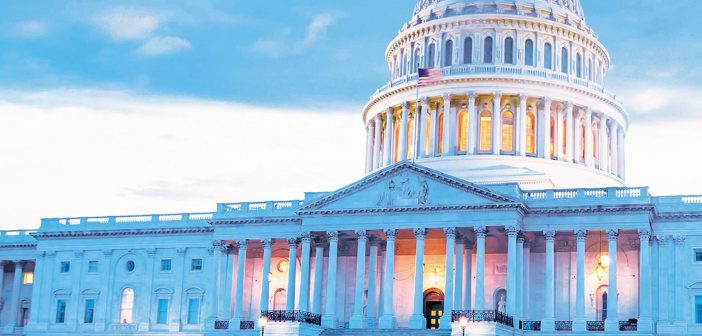by Asif Lakhani
Beginning in October 2019, Washington D.C. homeowners are prohibited from listing their secondary residences on online home-sharing platforms such as Airbnb and others (VRBO). Furthermore, property owners who have medical or professional absences are capped to renting out their secondary units for just 90 days in a calendar year when they are not present. Primary residences are still allowed to be rented out even though online booking services are technically not permitted as part of the new ordinance.
In a statement, Airbnb pushed back against the law, saying it would drain $64 million in supplemental income for Washington D.C. hosts. A preliminary financial analysis conducted by the District’s Chief Financial Officer concluded that the new legislation could cost D.C. government $96 million in “transient lodging” revenue and $104 million in total lost expenses.
Supporters of the legislation claim the short-term rentals drive up scarcity of long-term housing options and discouraging their usage will help keep home and hotel room prices in check. Short-term rentals account for just under a third (~9,000) of total hotel rooms available in the District, according to a D.C. Council committee report.
On the plus side, tourism and travel to the nation’s capital is at an all-time high. As a matter of fact, Washington D.C. has experienced nine consecutive years of tourism growth, with a record number of 21.9 million domestic visitors having made a trip to the District in 2018, according to Destination D.C., the District’s tourism and convention bureau. (The latest report was not available at press time.)
Destination D.C.’s 2017 numbers show the influx of visitors, which totaled 22.8 million people, resulted in $814 million in tax revenue for the District, and $7.5 billion in total visitor spending that year. The travel supported more than 75,000 in industry jobs as well, according to Destination D.C. In all, there are 140 hotels in Washington D.C. with more than 30,000 hotel rooms. An additional 18 hotels featuring more than 3,000 rooms are in the development pipeline, according to the report.
Visitors to Washington D.C. have plenty to see and do while there. The District proudly claims to be both the “Capital of Free” and “America’s Front Yard” with solid reasoning for each. Without a doubt, the main attractions in D.C. are the White House and the National Mall, where the Washington Monument, U.S. Capitol Building, and Lincoln Memorial showcase the past, present, and future of American history. D.C.’s National Mall is the highest-visited national park in America, according to Destination D.C. A number of free museums, such as the U.S. Botanic Garden and National Gallery of Art, are located at the National Mall as well.
Those looking to visit the White House can schedule a free tour (via one’s member of Congress) up to three months in advance. An alternative option to seeing the inside of the building is by planning a trip to White House Visitors Center, which is free to enter and features interactive exhibits, a large-scale model of the White House itself, rare artifacts, and a gift shop. The building is located downtown, just off of the White House grounds.
Other free attractions in Washington D.C. include the 17 museums, galleries, and National Zoo that make up the Smithsonian Institution. Specific museums in the collection include the National Air & Space Museum, Natural History Museum, and the National Postal Museum, to name a few. There are more than 150 million objects on display throughout the Smithsonian Institution, according to Destination D.C. Not one to shy away from history, the District also is home to The Phillips Collection in Dupont Circle, which is the first museum of modern art in the United States. The permanent collection galleries are free; the ones requiring tickets are available at nominal costs.
However, Washington D.C. isn’t just free museums. There are a handful of waterfront communities located in the region, all of which are easily accessible via water taxi or river cruise. The National Harbor, Alexandria, and Georgetown all are popular destinations with each having its own unique vibe.
Food in the District also is among some of the best the country has to offer. There are 16 Michelin star restaurants in Washington D.C., according to Destination D.C., so fine-dining enthusiasts will have no trouble finding a place to eat when in town, though snagging a reservation may not be as easy. On the other end of the spectrum, D.C. has an incredible number of excellent casual yet affordable dining options that are perfect for families and/or business meetings. President Obama was no stranger to the Washington D.C. food scene himself, having frequented places such as Oyamel Cocina for Taco Tuesday and Taylor Gourmet sandwiches, according to “The Feast” on Bravo TV. Chances are if it’s good enough for the President, it’s good for the rest of us, too.
As far as tourism and travel go, Washington D.C. is worthy of being on everyone’s list. While the short-term housing legislation will change the landscape of tourism and travel to and from town, there really is something for everyone to do, see, and explore in Washington D.C. After all, isn’t that what a great front yard should be – one that invites you in and makes you want to stay a while?



